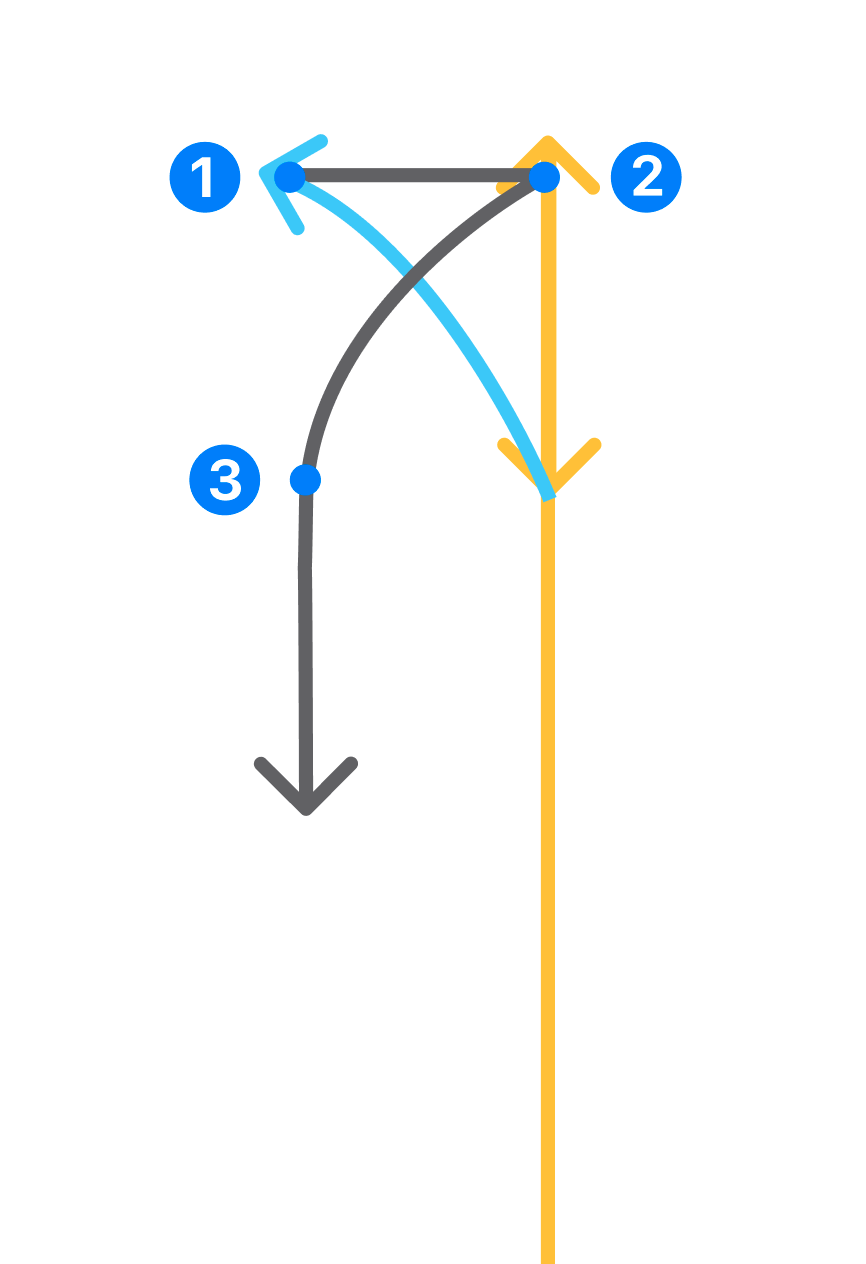What is the difference between U-turn and Three-point turn?
U-turn vs. Three-point turn: a brief description
U-turn:
Imagine you are operating a lawnmower on a spacious lawn. When you get to the edge and need to turn around, making a U-turn will be a great help. You simply need to operate the lawnmower, let it travel along a semicircular path, so that you can quickly change direction and continue mowing.
Three-Point Turn:
If the lawn is bordered by trees, flower beds, or other obstacles, making the space narrow, then a U-turn may no longer be the best option. In this case, you can try a three-point turn. First, you need to drive forward a short distance to create enough space for the upcoming turn. Then, slowly turn the steering wheel and begin backing up the lawnmower. While reversing, be extremely cautious and keep a close eye on the distance between the rear of the lawnmower and the surrounding obstacles to ensure no collisions occur. Finally, when the lawnmower reaches the desired turning position, adjust the direction and continue driving forward. This way, you have successfully completed a three-point turn. Now, you can easily continue mowing the lawn without worrying about difficulty operating the lawnmower in tight spaces.
Three-Point Turn of Yarbo
- Backing Up: When Yarbo approaches the turning point, it will first back up a short distance to prepare for the turn.
- Slowing Down: Before starting the turn, Yarbo will reduce its speed to 0.2 meters per second to ensure a smooth and safe turn.
- Stopping and Backing Further: Upon reaching the first point, Yarbo will come to a complete stop and then begin backing up to the second point to adjust for the turn angle.
- Completing the Turn: Once stable at the second point, Yarbo will start turning forward at a preset angle until it reaches the third point, completing the turn and continuing to drive in the new direction.
 U-turns vs. Three-point Turns: Choosing the Best Turning Method to Optimize Mowing Efficiency and Lawn Care
U-turns vs. Three-point Turns: Choosing the Best Turning Method to Optimize Mowing Efficiency and Lawn Care
When managing and maintaining lawns, selecting the right turning method is crucial for protecting the lawn surface and enhancing work efficiency. Here we discuss the practical applications of U-turns and three-point turns, helping you choose the most suitable turning method based on the specific conditions of your lawn.
U-turn: Fast and Suitable for Open Areas
A U-turn is an efficient turning method, especially suitable for spacious, obstacle-free lawns. This turning method can be completed quickly because it does not require frequent changes in driving direction, thus reducing time loss and pressure on the lawn. When you have enough space for wide turns, you should prefer U-turns because they allow the mower to maintain continuous motion, minimizing damage to the lawn.
Three-point Turn: Precise Control, Suitable for Narrow or Obstacle-filled Areas
In areas where lawn space is limited or surrounded by trees, decorations, and other obstacles, a three-point turn should be chosen. This turning method allows the mower to operate precisely in limited spaces, avoiding collisions with obstacles, and protecting both the machine and the lawn. Although slower, three-point turns effectively prevent unnecessary damage to the lawn.
Selection Strategy:
- Space Assessment: Prefer U-turns on wide and open lawns to improve the speed and efficiency of the job. In narrow or obstacle-filled environments, choose three-point turns to protect the lawn and mower.
- Lawn Protection: Consider the fragility and maintenance needs of the lawn. For newly planted or high-maintenance lawns, three-point turns are recommended to reduce pressure and damage to the lawn.
Through this analysis, we hope to help you better understand mower turning technology and make the most appropriate operational decisions in various lawn environments, effectively enhancing work efficiency and lawn care quality.
Related Articles
How to clean the Yarbo lawn mower?
Cleaning Lawn Mower Module Detach the lawn mower from the universal body. Raise the lawn mower from the side and place the lawn mower on Module Vertical Stand, please refer to the following picture. Utilize a high-pressure water gun or water hose to ...2023 Yarbo Lawn Mower User Manual
Please download the attached file for the User Manual of the 2023 Lawn Mower.2023 Yarbo Lawn Mower Quick Start Guide
Please download the Quick Start Guide for the Yarbo Lawn Mower.Instruction related to the mower's mapping
This artical outlines the mapping process, which serves as the initial stage of autonomous operations. You don't need to create a new map if you have previously generated one for Snow Blower S1 using the app, unless modifications to the working area ...What should I do if Yarbo lawn mower vibrates abnormally during mowing?
Stop Operation Immediately: Cease mowing and allow all moving parts to come to a complete stop before proceeding. The instructions about how to control Yarbo physically are shown in the artical "Physical Controller Instruction". Use the Emergency ...